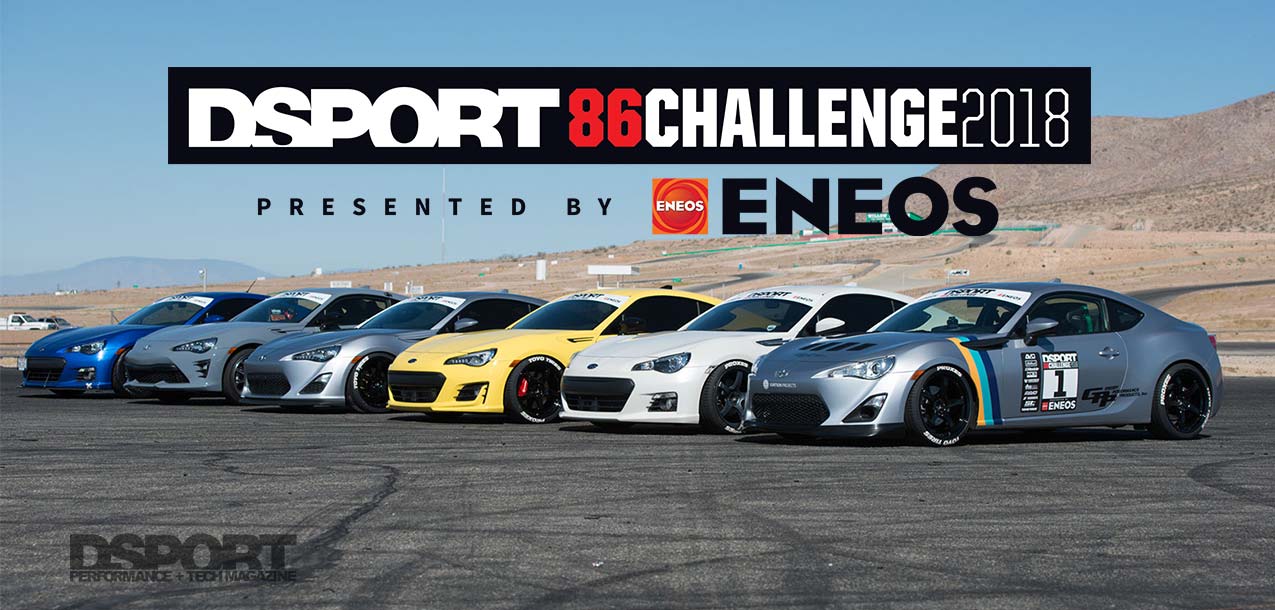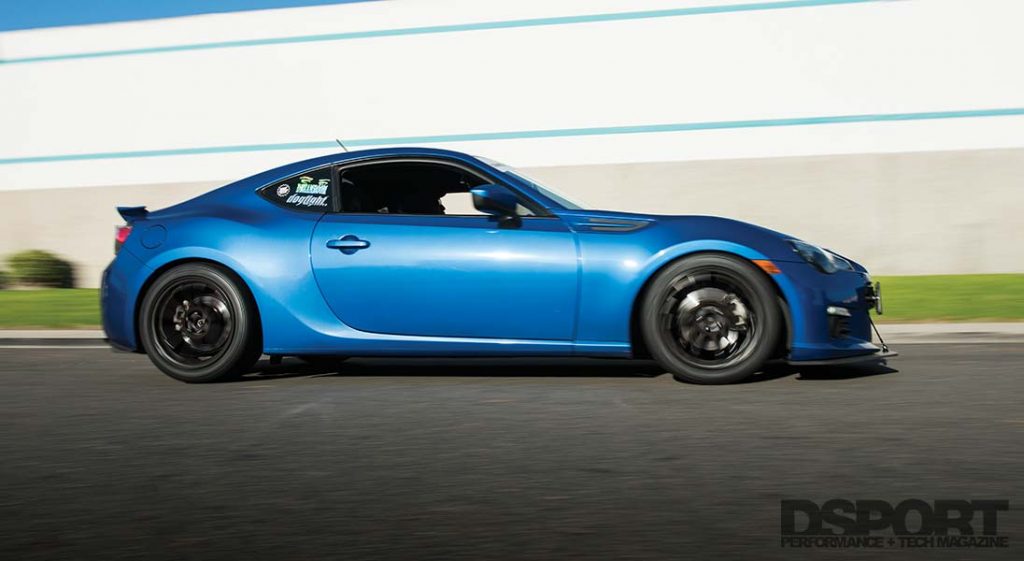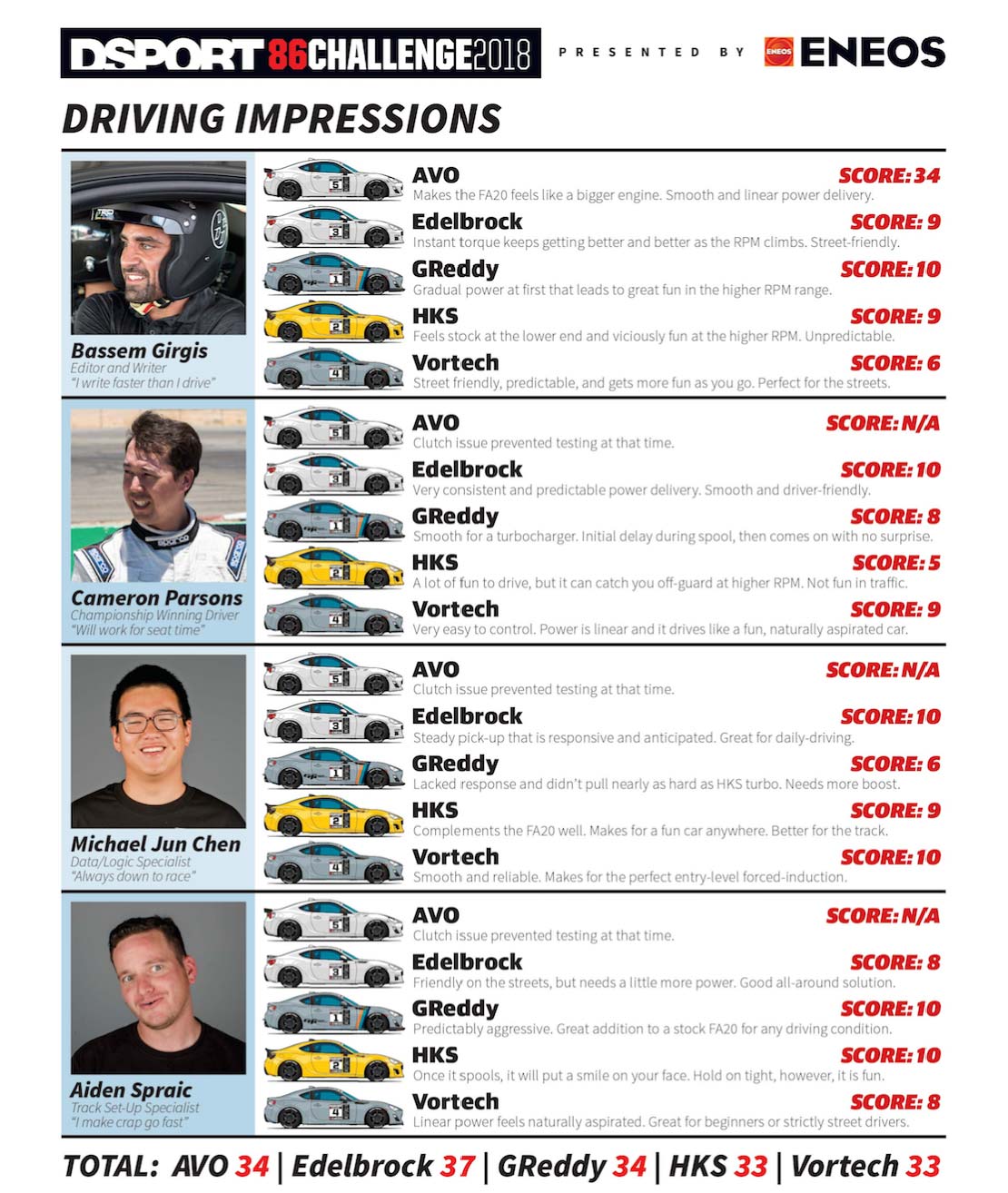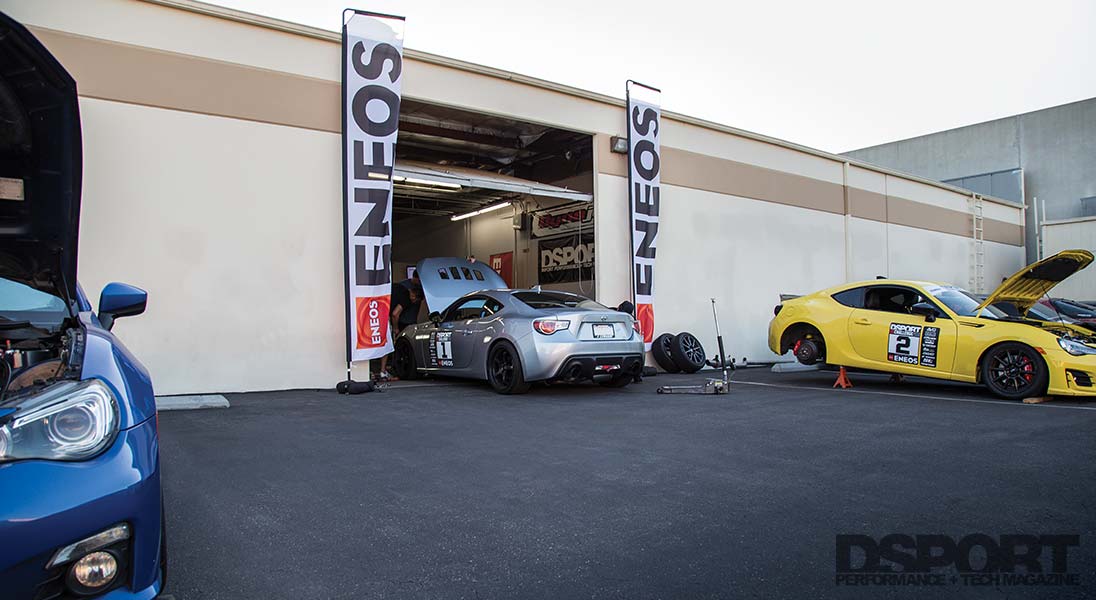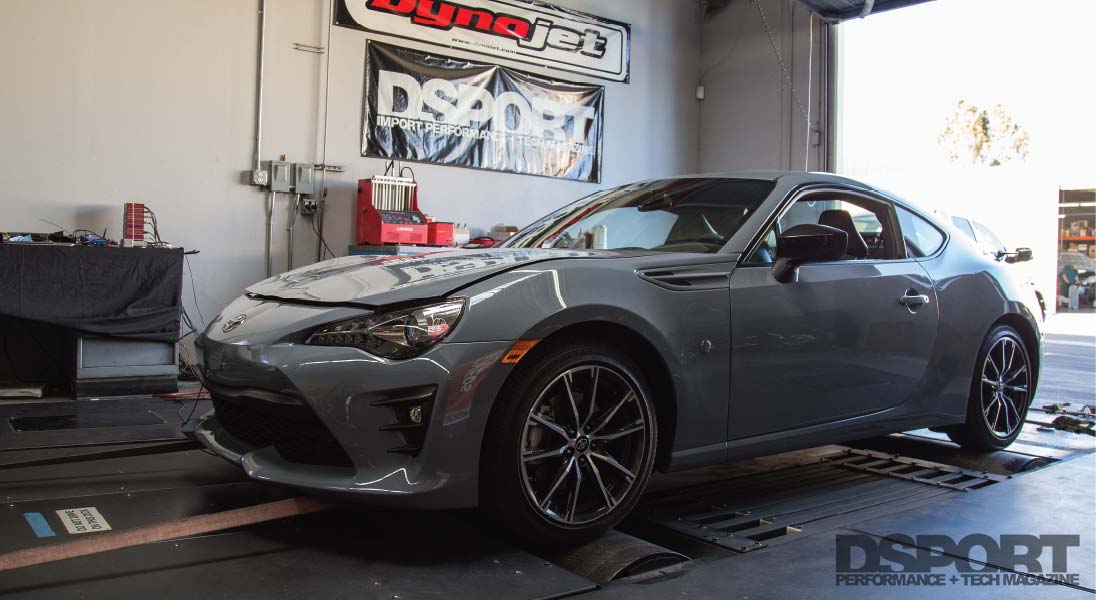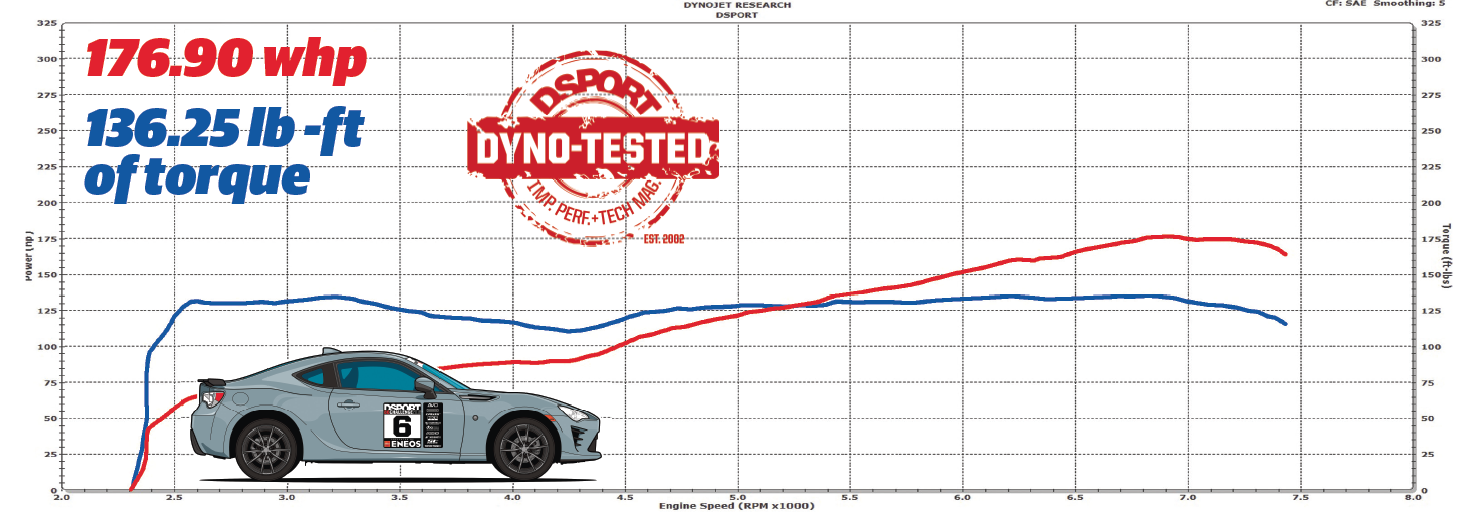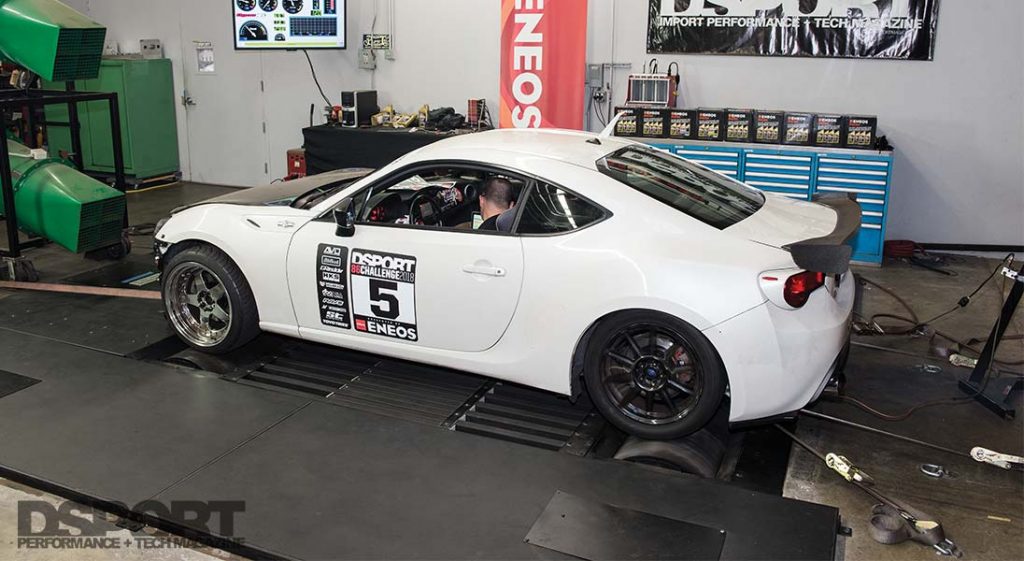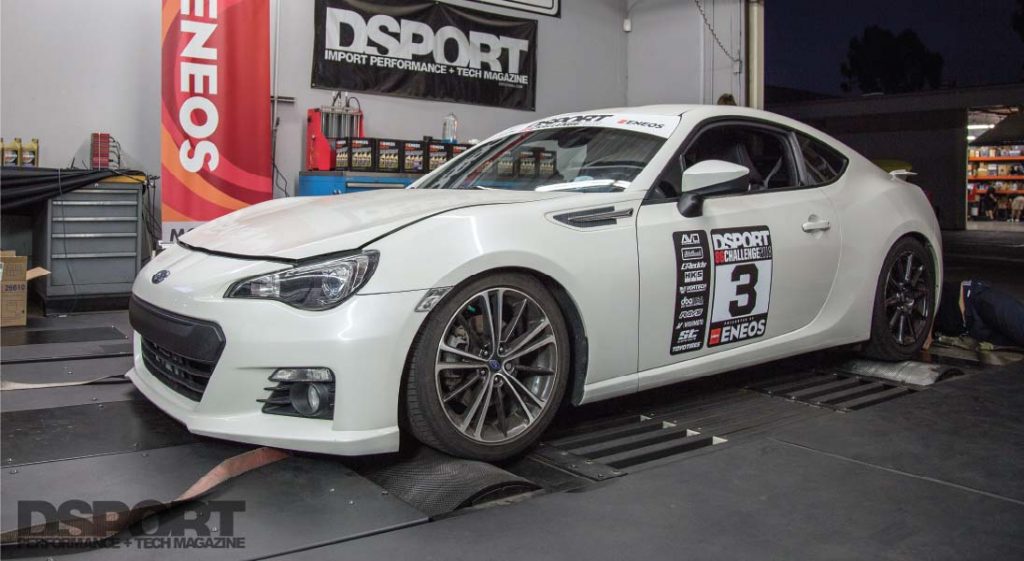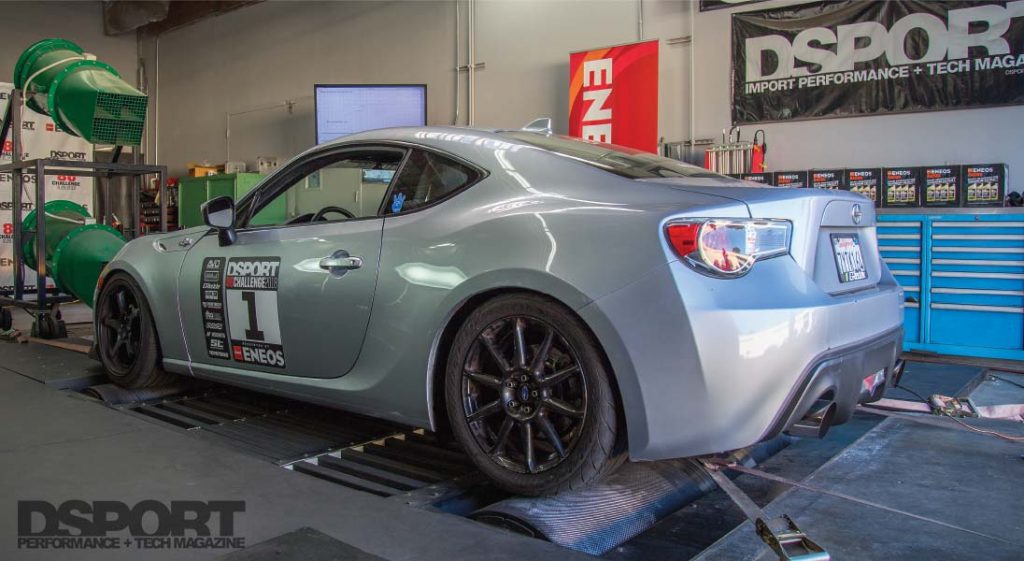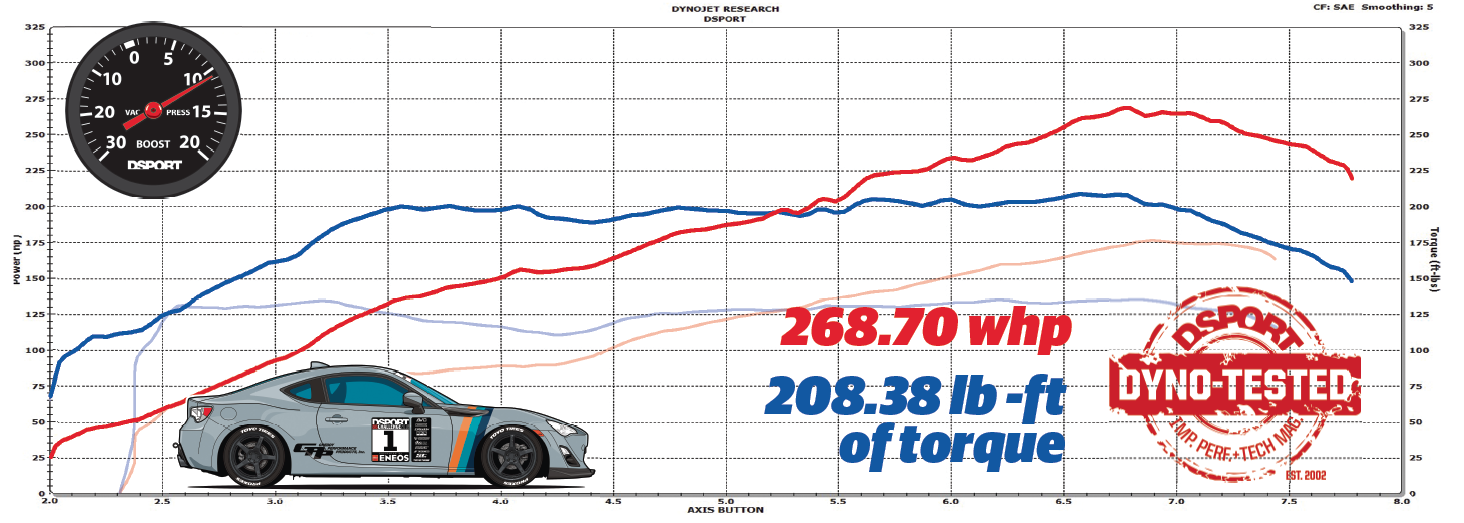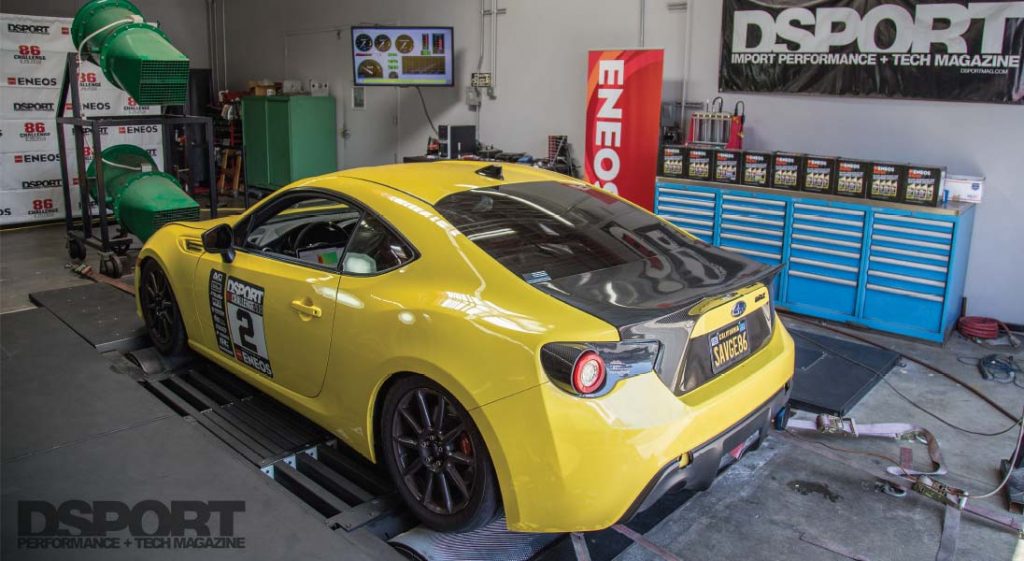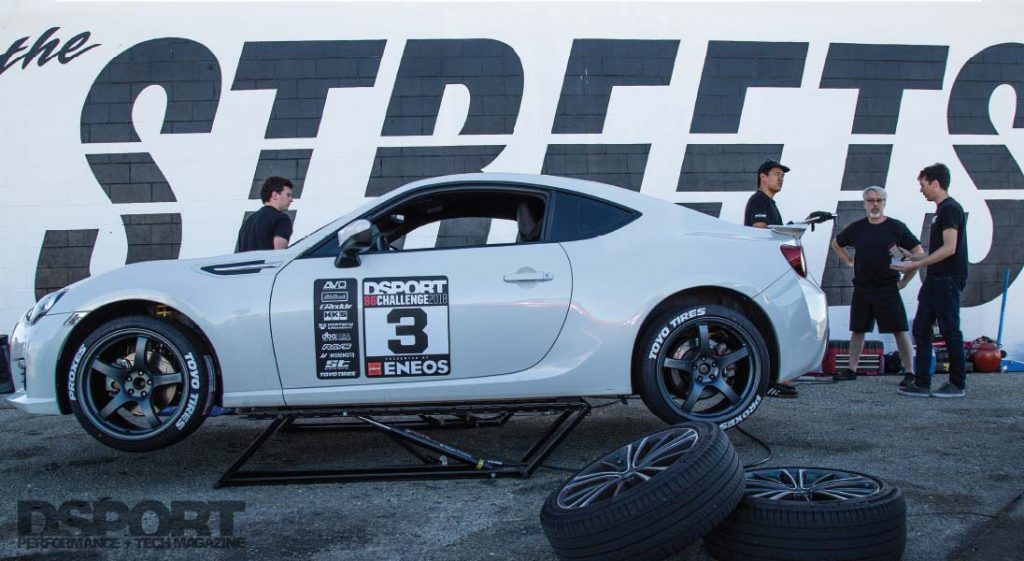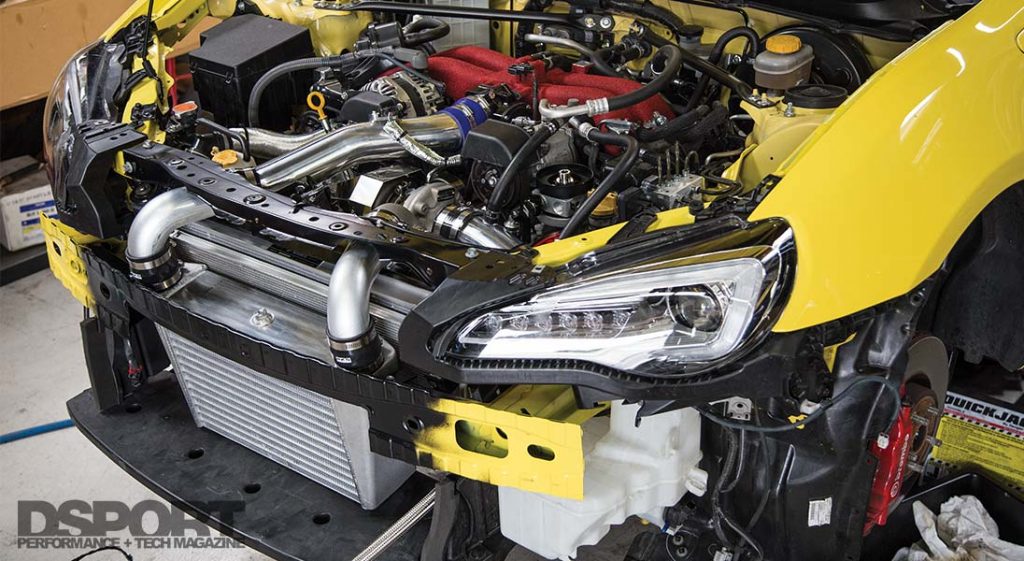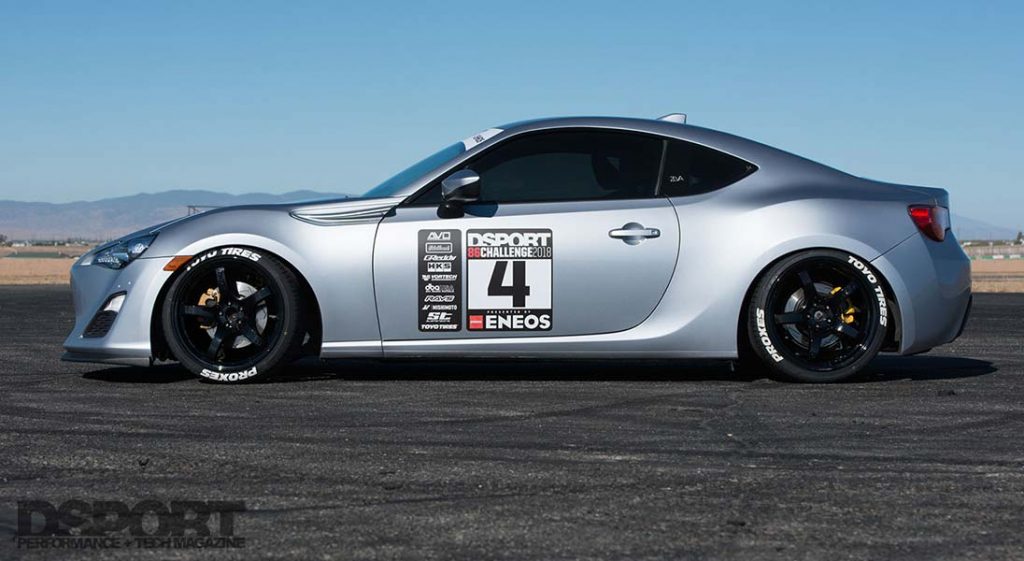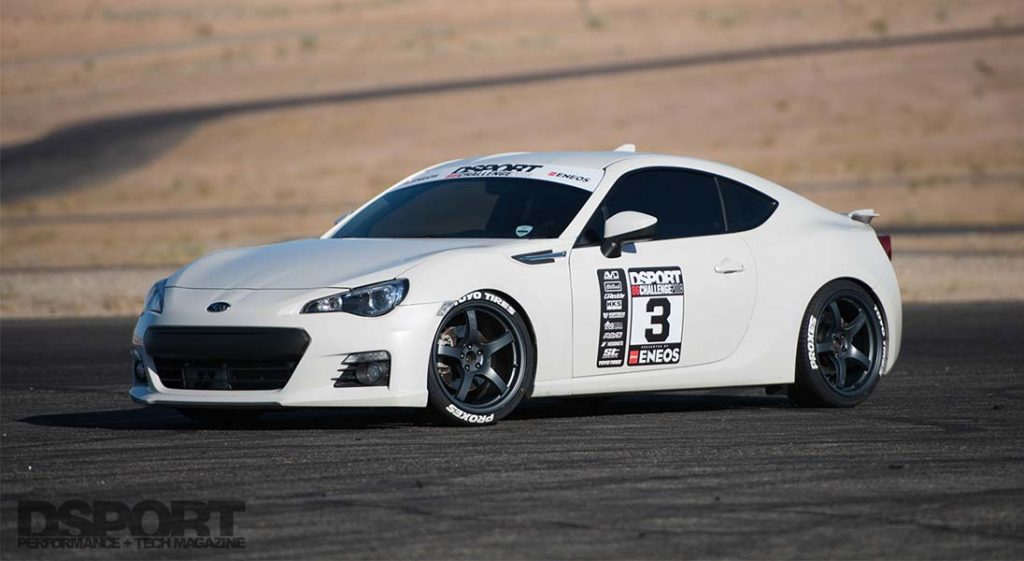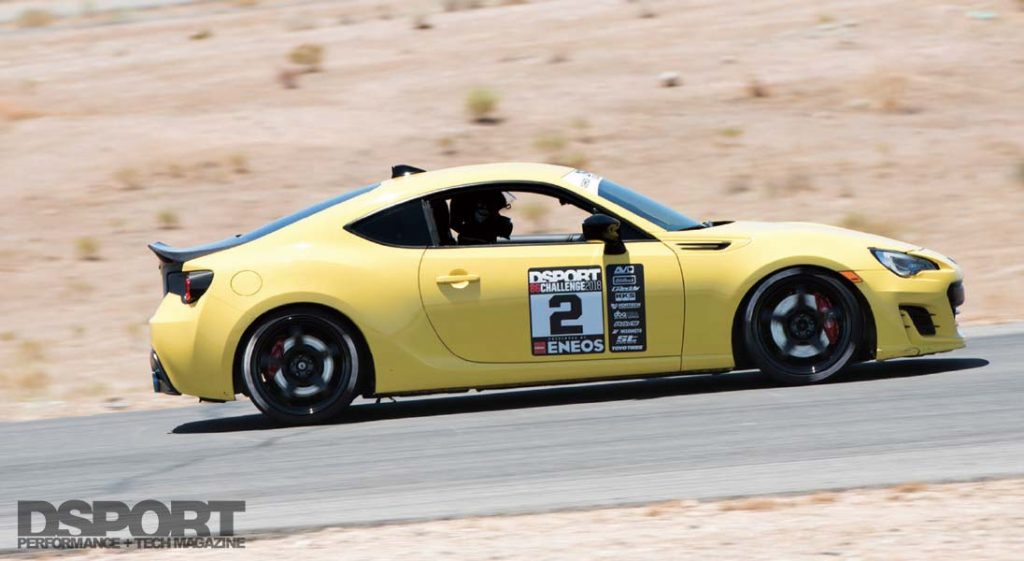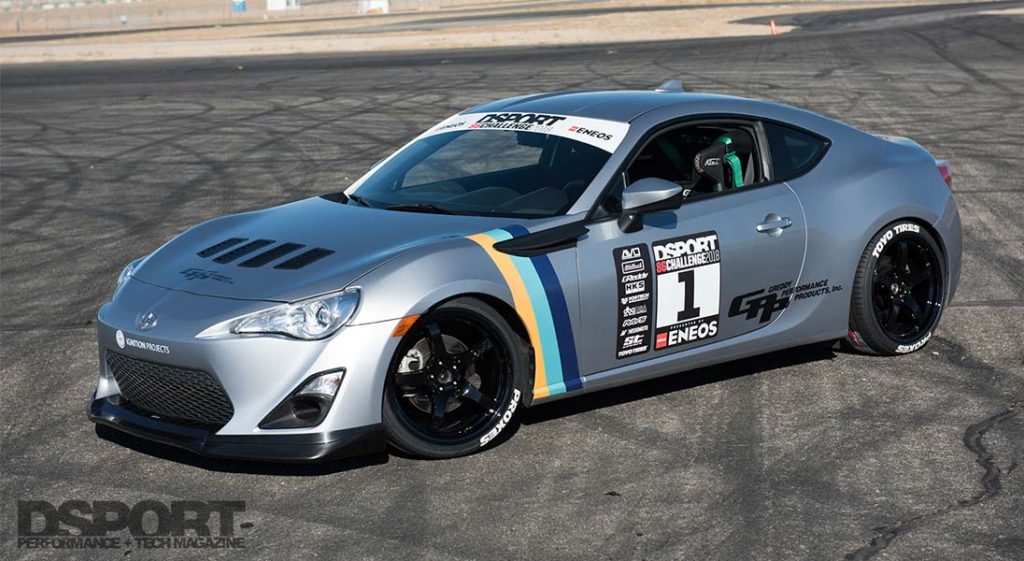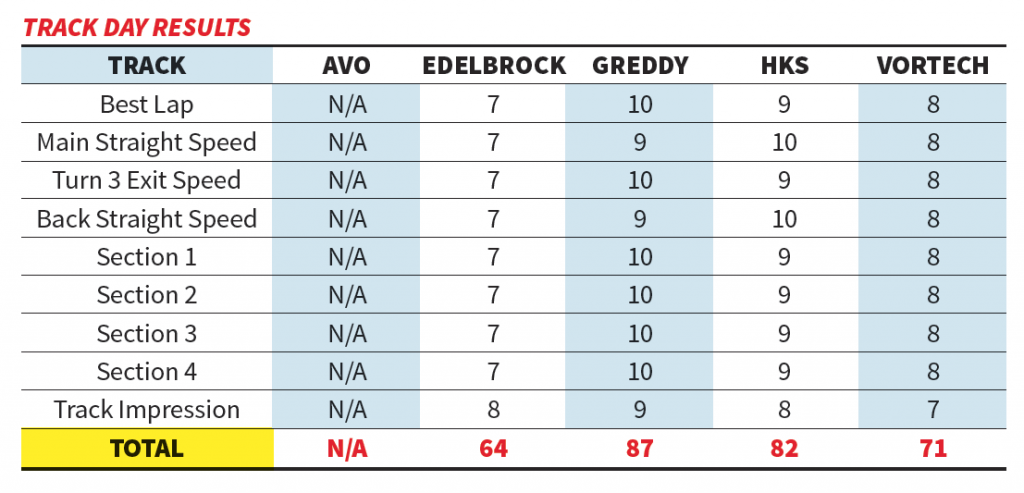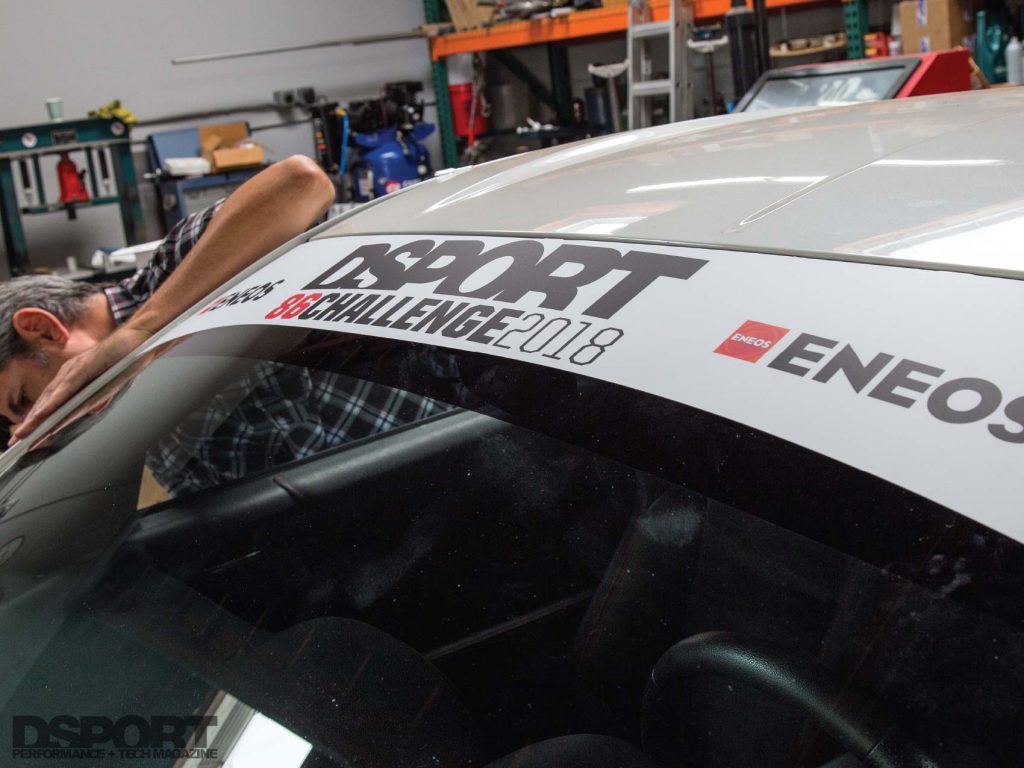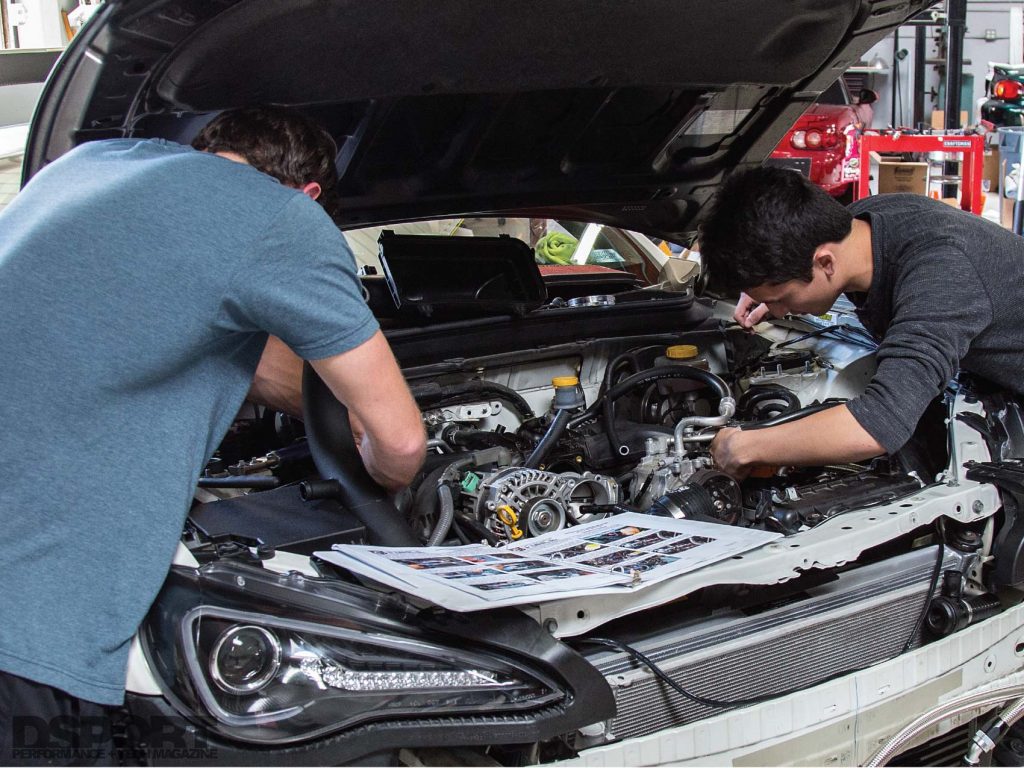Street Impressions
Dyno monsters and track beasts don’t always work well on the streets. Forced-induction is the perfect solution if you are seeking more power out of your FA20, but all systems on the market behave differently on the streets. Some drivers may be looking for big power and don’t mind a little lag, while others may demand an extremely responsive car. Four DSPORT editors took to the streets looking for drivability, comfort, response, and all around impressions of our five forced-induced FA20s.
Dyno Data
Track data can vary from one driver to another, street conditions make every car behave differently, but like George Washington, the dyno numbers never lie. 100 maximum points could possibly be awarded to the car with the highest dyno numbers. This part of the challenge is our scientific category where we see exactly how each forced-induction kit affects the FA20. The dyno data provided us with solid facts that will give anyone seeking a forced-induction system for their 86/FR-S/BRZ an idea of what to expect from the most popular systems on the market.
Baseline
Thanks to Toyota, a stock 2018 Toyota 86 was provided to us. This car would serve as our baseline in the 86 Challenge. The 2018 Toyota 86 rocks a 2.0-liter flat-four boxer engine. The FA20 features a boxer configuration, which allows the engine to be more compact and sit low in the chassis. This truly improves balance and handling, making it a great enthusiast car. The FA20 with the six-speed manual transmission delivers 205 horsepower and 156 lb-ft of torque to the crank. When driving the new 86, true fun is realized in the handling department. The chassis has been designed to optimize the center of gravity, making for a precise handling car. Of course not all 205 horsepower and 156 lb-ft of torque end up making it to the wheels due to drivetrain losses.
On the Dyno
After the drivetrain loss, our dyno showed 176.90 of peak horsepower to the wheels, and 136.25 lb-ft of peak torque. Thankfully, the Toyota 86 welcomes more power with open arms, making it a great foundation for forced-induction. The all-stock Toyota 86 delivers the power early on. But after the quick pick up, you aren’t left with much to keep the smile going on the track. The initial torque is realized in the very early RPM range between 2,300 RPM and 2,600 RPM. After that, the power curve stabilizes all the way through. The power gradually climbs up and continues climbing until it peaks at 176.90whp. This allows for quick enough acceleration to get you up to speed, then maintaining the power after. Adding forced-induction to this stock FA20 will not only increase the peak power and torque, it will also improve the curves and allow for more power to continue building up throughout the entire band.
AVO Turboworld
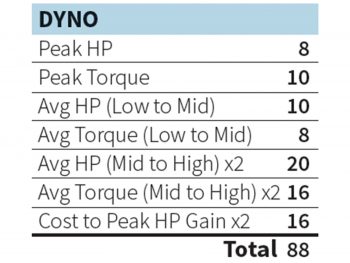 AVO Turboworld has been a part of the automotive industry since the 1960s. The AVO turbocharger kit has been through extensive testing in varying driving conditions. It comes with a front-mount intercooler and all the necessary accessories to bolt-on the FA20 engine. On the dyno, the AVO turbocharger delivered 253.01 of peak wheel-horsepower and 222.85 lb-ft of torque. Both power and torque curves start out smoothly, making for an extremely fun and predictable drive. The power gradually builds up and climbs up linearly, allowing this turbocharger to feel like a supercharger. The curves show that the AVO kit makes for a great system on the streets with no sudden power, while delivering continuous power that would pay off on the track as well.
AVO Turboworld has been a part of the automotive industry since the 1960s. The AVO turbocharger kit has been through extensive testing in varying driving conditions. It comes with a front-mount intercooler and all the necessary accessories to bolt-on the FA20 engine. On the dyno, the AVO turbocharger delivered 253.01 of peak wheel-horsepower and 222.85 lb-ft of torque. Both power and torque curves start out smoothly, making for an extremely fun and predictable drive. The power gradually builds up and climbs up linearly, allowing this turbocharger to feel like a supercharger. The curves show that the AVO kit makes for a great system on the streets with no sudden power, while delivering continuous power that would pay off on the track as well.
Edelbrock E-Force Supercharger
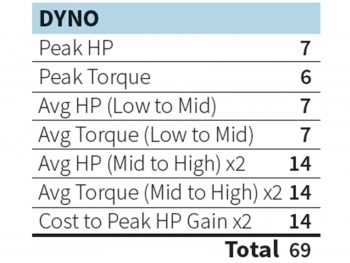 Designed exclusively for the FA20 found in the Toyota 86/Scion FR-S/Subaru BRZ, the Edelbrock E-Force Supercharger system features an inverted design with long runners. This allows for exceptional airflow at the higher RPM without sacrificing drivability on the streets. The supercharger features a compact size when compared to other positive displacement superchargers on the market. This is achieved by utilizing the Eaton 1320 TVS rotor assembly, which is more efficient in a smaller package. The system comes with a large dual pass air-to-water intercooler and heat exchanger to maximize cooling of incoming air. On the dyno, the Edelbrock delivers a smooth power curve that continues climbing all the way until redline. The torque curve starts out more dramatically, then eventually stabilizes at the higher RPM ranges. The E-Force delivers a peak horsepower of 248.29 and 182.45 lb-ft of peak torque while running at 13.79 psi of peak boost.
Designed exclusively for the FA20 found in the Toyota 86/Scion FR-S/Subaru BRZ, the Edelbrock E-Force Supercharger system features an inverted design with long runners. This allows for exceptional airflow at the higher RPM without sacrificing drivability on the streets. The supercharger features a compact size when compared to other positive displacement superchargers on the market. This is achieved by utilizing the Eaton 1320 TVS rotor assembly, which is more efficient in a smaller package. The system comes with a large dual pass air-to-water intercooler and heat exchanger to maximize cooling of incoming air. On the dyno, the Edelbrock delivers a smooth power curve that continues climbing all the way until redline. The torque curve starts out more dramatically, then eventually stabilizes at the higher RPM ranges. The E-Force delivers a peak horsepower of 248.29 and 182.45 lb-ft of peak torque while running at 13.79 psi of peak boost.
GReddy Turbocharger
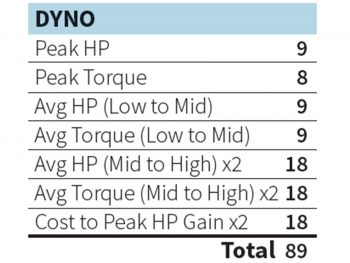 The GReddy Performance Products GTXR Tuner Turbo Kit features a Garrett GTX2867R Gen II turbocharger. Keeping the incoming air cool is a GReddy Type 24 center-front-mounted intercooler. The system is a tuner kit, so it comes with everything you need to get the job done and finish the installation but without the fuel and tuning upgrades. The GReddy turbocharger delivered 268.70 of peak whp and 208.38 lb-ft of peak torque on our dyno. Running at a peak boost of 10.7 psi, the kit offers smooth curves that is truly realized gradually as the RPM increases. The torque comes on early with a nice, consistent climb, making it a great system for both the streets and the track. The power comes on smoothly, allowing this turbocharger to act slightly like a supecharger in regards to how linear the power is delivered.
The GReddy Performance Products GTXR Tuner Turbo Kit features a Garrett GTX2867R Gen II turbocharger. Keeping the incoming air cool is a GReddy Type 24 center-front-mounted intercooler. The system is a tuner kit, so it comes with everything you need to get the job done and finish the installation but without the fuel and tuning upgrades. The GReddy turbocharger delivered 268.70 of peak whp and 208.38 lb-ft of peak torque on our dyno. Running at a peak boost of 10.7 psi, the kit offers smooth curves that is truly realized gradually as the RPM increases. The torque comes on early with a nice, consistent climb, making it a great system for both the streets and the track. The power comes on smoothly, allowing this turbocharger to act slightly like a supecharger in regards to how linear the power is delivered.
HKS Turbocharger
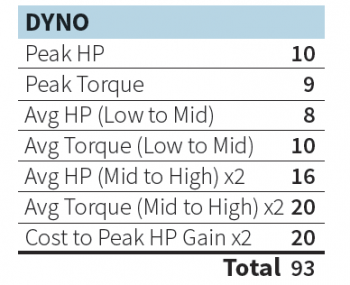 Designed as a direct bolt-on for the Toyota 86/Scion FR-S/ Subaru BRZ, the HKS GTIII-R turbocharger is available for stock or tuned engines. The kit can be purchased with a catless extension or an extension with a catalytic converter. On the dyno, the HKS Subaru BRZ delivered the highest peak horsepower, pushing 285.63 whp and 221.05 lb-ft of peak torque. Although the power is not felt early on, it can catch you off guard once boost kicks in later on. The HKS turbocharger ran on 15.22 psi of peak boost on our dyno. The power and torque curves dip around 4,500 RPM. This happened because peak torque was reached and detonation occurred. To over compensate for it, timing was pulled causing the curves to briefly dip. The curves then smooth out and climb all the way through, making for a seriously fun system.
Designed as a direct bolt-on for the Toyota 86/Scion FR-S/ Subaru BRZ, the HKS GTIII-R turbocharger is available for stock or tuned engines. The kit can be purchased with a catless extension or an extension with a catalytic converter. On the dyno, the HKS Subaru BRZ delivered the highest peak horsepower, pushing 285.63 whp and 221.05 lb-ft of peak torque. Although the power is not felt early on, it can catch you off guard once boost kicks in later on. The HKS turbocharger ran on 15.22 psi of peak boost on our dyno. The power and torque curves dip around 4,500 RPM. This happened because peak torque was reached and detonation occurred. To over compensate for it, timing was pulled causing the curves to briefly dip. The curves then smooth out and climb all the way through, making for a seriously fun system.
Vortech Centrifugal Supercharger
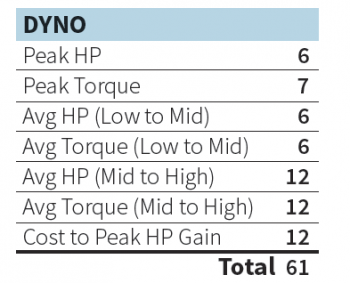 Vortech’s gear-driven V-3 centrifugal supercharger features an internal oil reservoir. Cooling is achieved through an air/air charge intercooler that features all aluminum tube ducting and large cooler core for maximum efficiency and cooling. Running at a peak boost of 10.50 psi, the Vortech supercharger delivered 228.20 of peak wheel horsepower and 183.30 lb-ft of peak torque. The Vortech’s power comes on linearly, which makes for an extremely smooth power curve that continues to rise as the RPM increases. The smooth power and torque makes for a very safe forced-induction system that can prevent internal engine components from wearing since no sudden torque occurs. This system is possibly the friendliest kit for street use.
Vortech’s gear-driven V-3 centrifugal supercharger features an internal oil reservoir. Cooling is achieved through an air/air charge intercooler that features all aluminum tube ducting and large cooler core for maximum efficiency and cooling. Running at a peak boost of 10.50 psi, the Vortech supercharger delivered 228.20 of peak wheel horsepower and 183.30 lb-ft of peak torque. The Vortech’s power comes on linearly, which makes for an extremely smooth power curve that continues to rise as the RPM increases. The smooth power and torque makes for a very safe forced-induction system that can prevent internal engine components from wearing since no sudden torque occurs. This system is possibly the friendliest kit for street use.
Quick Jack
The Quick Jack allowed us to quickly raise up the cars to replace the wheels and tires with the Gram Lights and the Toyo Tires. The Quick Jack is offered with a 12V DC, 110V AC, or 240V AC power unit. The jack features two lifting frames that connect to the power unit with a hydraulic line with quick connect fittings. Once the car is parked, the Quick Jack is then placed under it. A two-button controller raises the car to maximum height in just 30 seconds. This makes for a great tool for both do-it-yourselfers and shops with limited space.
Preparing for the Track
Preparing all five cars for the track made for a busy day at DSPORT Magazine. Aside from the long dyno day, all cars were being worked on to get all of the parts installed. We had to make sure all cars behaved identically under the track conditions of the 86 Challenge. We started with the modifications that will ensure all FA20s remain safe with the added boost from the forced induction. Then we turned to the upgrades that will complement the handling and improve lap times.
Well Oiled Machines
We turned our attention to engine lubrication to ensure all internal engine components remain unharmed. We equipped all five cars with ENEOS Racing Street oil. The motor oil starts with a higher quality synthetic base oil, and adds an optimum mix of proprietary additives to deliver stable viscosity and superior engine protection. We then focused on engine cooling courtesy of Mishimoto. We equipped all cars with oil coolers to maintain cool oil temperatures under the grueling track conditions. Also from Mishimoto, all cars received Mishimoto radiators to keep the engine cool. Although the factory radiator does a great job keeping the FA20 cool, aftermarket solutions are critical when forced-induction is introduced. These upgrades would ensure that all engines go unharmed, which led us to our next set of modifications: braking and handling.
Getting a Grip on It
With forced-induction on the table, we had to stay late addressing braking and handling. All cars received DBA USA brake pads and rotors. The XP650 track pads are engineered for tough conditions; however, they are not as noisy as some of the performance pads on the market. The 4000 Series rotors allow for consistent and effective hard braking, making them the perfect addition for any track car. In terms of suspension, we chose the ST Suspension coilovers. Although these entry-level coilovers are not track suspension, they lower the center of gravity and slightly stiffen the ride, which makes them ideal for forced-induced street-driven cars. We equipped all cars with Gram Lights 18 x 9.5-inch +38 offset wheels with the all-new Toyo Proxes Sport tires (245/35ZR18) wrapped around them. In the end, it doesn’t matter how fast the cars can go if we can’t keep traction. These final modifications were as critical as the forced-induction systems to ensure we gather accurate data from our 86 Challenge Presented by ENEOS.
Baseline
There’s no doubt that the 86 platform is fun on track, but it’s hard not to feel a little empty inside when the car hits the straightaway. Even if you remove the 86’s infamous torque dip from the equation, the 200-horsepower flat four under the hood just doesn’t have the guts to really move the 2,800-pound car. For our test, we chose to run laps around the popular Streets of Willow Springs, located within the Willow Springs International Raceway facility nestled away in the outskirts of the Mojave Desert.
We tested a completely stock Toyota 86 on track first to set the baseline. Our test took place in the middle of July through the late morning and afternoon, so conditions were of course brutally hot. The short and twisty 1.6-mile road course served as expected to reveal the shortcomings of the car.
The 86 loved the corners, but it relied on momentum in order to achieve any sort of decent exit speed. Put a wheel wrong or wait too long to get back on the throttle, and the slow climb back into the effective RPM range was a frustrating test of patience. Once the car crawled past 4,000 RPM, conditions went back to feeling normal. However, many of the tighter turns dipped the RPMs down to about 3,500 RPM, especially the first major turn which dragged the revs down to 3,200 RPM. On paper, you might think that dropping the car to second gear would easily resolve this and take advantage of the higher RPM horsepower. Unfortunately, the corner speed was exactly wrong enough where second gear always felt too low and third gear always felt too high. When having to choose between extra shifting and carrying momentum, it’s normally best to go with the latter.
Vortech
Vortech’s supercharger offering is among the more modest forced induction kits we tested, checking in with 228.20whp and 183.30 lb-ft of torque on the dyno. Although these gains aren’t massive, it makes a big difference in the car’s ability to build a little excitement for whoever’s behind the wheel. On track, the Vortech supercharger provided the car with just the extra push needed to carry it out of corners properly. It was hardly a rocket ship, but it made the car feel like it had an additional 40 naturally-aspirated horsepower. Really, this was how the car should have felt in factory form.
The Vortech supercharger proved a significant improvement over the stock setup in both time and speed. Each sector saw improvements of about one second each, while top speeds on the straight sections also saw decent increases. This was most noticeable coming out of turn 3, which exits to a steep uphill before transitioning into the next corner. The stock 86 only achieved 55.66 MPH in this section, while the Vortech supercharged car managed 67.55 MPH in the same spot.
Edelbrock
We’ve installed and tested Edelbrock’s E-Force supercharger in past DSPORT content, only to find great results for a streetable power solution for the 86 platform. This option lets users choose between a California CARB-legal pulley and tune that produces a peak 248.29whp and 182.45 lb-ft of torque, or faster spinning pulleys and a call to their own tuner for significantly more power. Since the Edelbrock supercharger kit is one of few that holds the advantage of offering California CARB compliance, we tested the car with this configuration. What we found during the track test was an excellent hybrid between street and track use. The throttle pedal felt responsive, but never twitchy. Power came on strong throughout the RPM range, but never close to out-of-control. When cruising at traffic speeds, the car was calm and easygoing, but on track it pulled like an actual sports car.
The Edelbrock supercharger clocked a best lap time of 1:32.77, barely slower than Vortech’s 1:32.23. In most sections on track, the Edelbrock supercharger came only a few miles per hour shy of Vortech’s top speeds as well. The two are close competitors in terms of performance, and on a longer race track you may expect to see Vortech become a second faster or more. Based on our results at Streets of Willow, however, the Edelbrock supercharger actually felt faster from inside the car. But of course, feeling fast and going fast are two very distinct performance elements.
HKS
HKS’ offering dials up the performance significantly, introducing a turbocharged solution versus the above tested superchargers. The result is 285.63whp and 221.05 lb-of torque on the dyno, and an absolute blast to drive. Yes, there is a bit of a wait time for the turbo to spool, but hitting the sweet spot in the RPMs feels like hitting the afterburners. This does make it a little more difficult to manage the throttle when moving around long corners. The car continually begs to be unleashed with a little extra boost. If you’re not careful and you give it a dab of too much throttle in a turn, you’ll quickly find yourself counter-steering to keep the back end under control. That being said, how you read these characteristics is up to you. Some may find this bit of excitement a bit too much for a daily driver in LA traffic. Others may want exactly this to make their trips significantly more fun.
We weren’t too surprised to discover that the HKS-equipped car pulled off a 1:30.79 lap time, nearly seven whole seconds quicker around Streets of Willow than the baseline car. Speeds everywhere also saw notable increases, especially on the main straightaway where the car pulled 10MPH faster, thanks to the extra boost. This kit certainly required additional care on the accelerator when driving through and exiting corners, but it was all made up for on the straightaways.
GReddy
It’s a rare case to find a turbocharger that drives like a supercharged or naturally aspirated car, and GReddy is teasing that realm with its turbo kit offering for the 86. Spinning the dyno rollers to prove 268.70whp and 208.38 lb-ft of torque, this kit delivers respectable numbers, but the most impressive part is the power delivery when on the street or track. The turbocharger gives that little extra push as the RPMs climb higher, but the turbo spool is so gradual and smooth that many drivers and passengers are unlikely to notice it. The ability to pull this off with these power numbers on the FA20 is an achievement on its own. The track test highlighted this kit’s benefits of both power on the straights and controllability in the twisty spots. The level of acceleration felt directly linked to the throttle pedal, allowing the car to do exactly what it was asked to.
Similar to how the superchargers compared to each other, the GReddy turbocharged 86 only turned a slightly quicker lap time than the HKS turbocharged car. At a 1:30.49 time, it managed an improvement of three tenths of a second, likely to turn into a half second on a larger track. However, the GReddy car pulled off higher speeds immediately off of the corners and shorter straightaways, adding to the track suitability of this kit. This much power and torque in a 2,800 pound car never felt so easy to drive.
AVO Turbocharger
Unfortunately for the AVO Turboworld car, the clutch was slipping the day of the track. Due to time restraints, we couldn’t repair the car on time. However, after the track day, we were able to replace the clutch and bring the car back on the dyno to get as much data as we can out of it.
Wrapping Up
After an extensive amount of testing on the streets, the dyno, and the track, the 2018 DSPORT 86 Challenge Presented by ENEOS came to an end. All forced-induction systems and their cars performed well, offering something for everyone. The score system highlighted the pros and cons of each system, allowing the readers and buyers to get a solid idea of the right forced-induction system for their specific needs.
We slightly modified our scoring system for the track portion of the challenge. After spending time on track, we were convinced that adding more sector speeds will give us more accurate data. The additions increased the total possible score to 260 points.
The Winners…
When it comes to forced-induction, it is nearly impossible to have one system for everyone. Each forced-induction system offers different values, and while some drivers may be looking for the most power possible, others may be looking for a street-friendly system that could complement their stock FA20. According to our scoring system, the GReddy turbocharger scored the highest, coming in at 237 points. Although the GReddy system didn’t score the most points in the Preparation and the Dyno categories, it made up for it on the track with the Best Lap time and fastest exit speeds on all sectors. The HKS turbocharger came in second with the most points in the Dyno category with its highest peak horsepower, as well as the average mid-high power and torque. The Edelbrock supercharger offered the most value in the Preparation, thanks to its ease of installation and clean fit and finish. The Vortech performed well on the track, thanks to its smooth power delivery. The Vortech also stood out as the easiest to install. Despite not being tested on the track, the AVO turbocharger shined on the dyno, offering the highest peak torque, average low-mid horsepower, as well as the highest average low-mid torque, making it the best turbocharger at the low-end of the RPM range.
What’s Right for You
No two forced-induction systems will behave the same. Before deciding on your next turbocharger or supercharger for you FA20, ask yourself a few questions. Do you want a CARB-legal system? Is low-end power more important than high-end? Do you prefer big power or smooth delivery? If you want the highest power you can get out of your FA20, the HKS system will give you just that. If you drive your 86/FR-S/BRZ on the streets more than the track, you may be more interested in the smooth power delivery of either the Edelbrock supercharger or the Vortech centrifugal supercharger. If you want an all-around capable turbocharger with great power, the GReddy turbocharger may accomplish that, and if you want a turbocharger that will deliver smooth power and torque, almost like a supercharger, the AVO kit will put a smile on your face.
Thank You
We would like to give special thanks to everyone that helped make this challenge successful. Ecutek for providing all the softwares for tuning. Bill Knose of Delicious Tuning for his time spent on the dyno tuning the cars. Steve Lepper of Gearhead’s Garage for preparing all of the cars for the track. Milwaukee Tool for providing the M18 Impact Wrench for our track preparation. Christopher D Vopat of Racepak for monitoring all track data.


